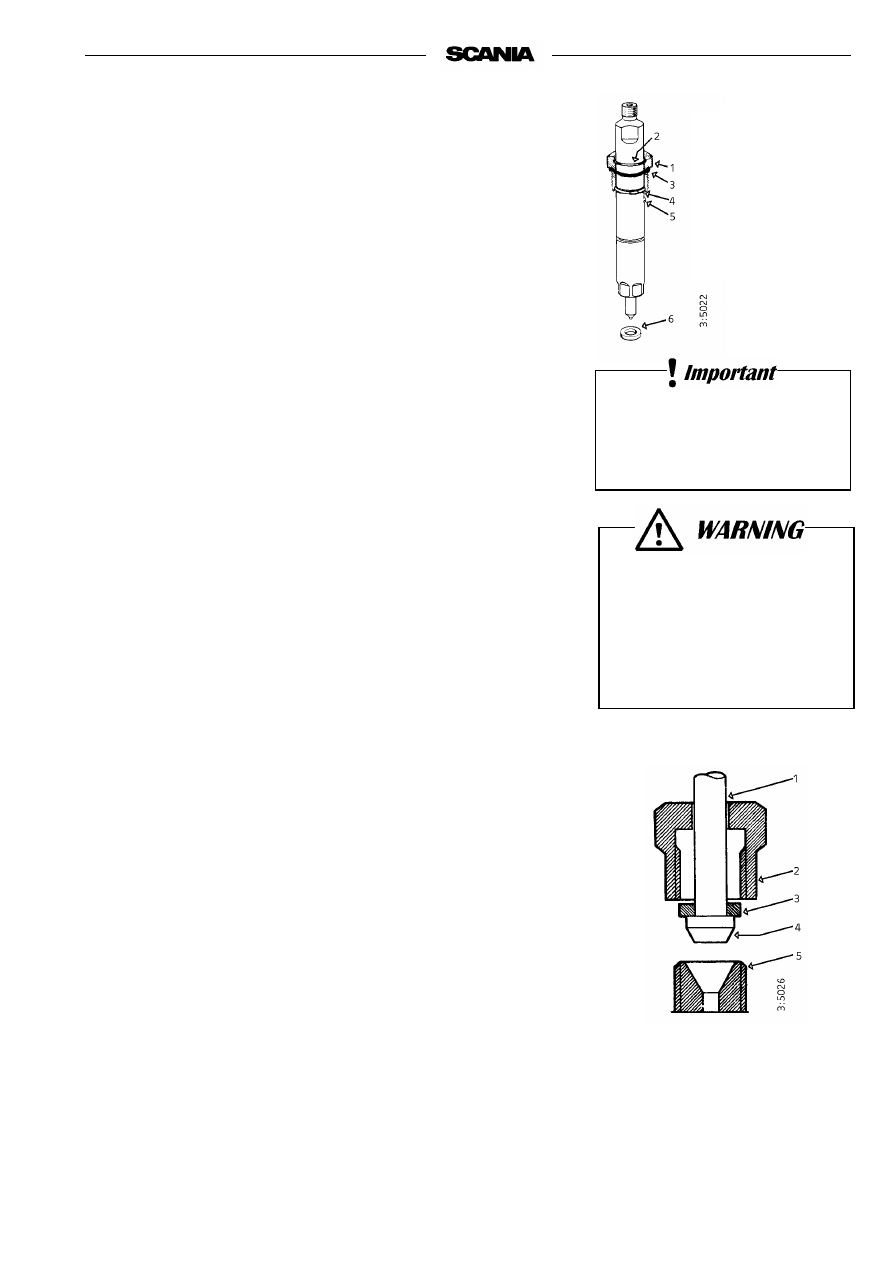Scania D9, DI9, DC9. Industrial engine. Operator’s manual - part 3

14. Every 2400 hours:
CHECKING THE INJECTORS
Injectors should be inspected by trained personnel with access to the neces-
sary equipment. Inspection should be carried out at least once a year or every
2400 hours.
Removal
1.
Clean around the injectors and connections, including clamps and
brackets.
2.
Detach the delivery pipe bundle and leak-off fuel lines.
3.
Unscrew the injector.
4.
Fit protective plugs on the injector and delivery pipe.
5.
Lift up the seal from the bottom of the injector seat if it does not come
out together with the injector.
6.
Fit a core plug in the injector seat in the cylinder head.
7.
Clean the injectors and check/adjust in a nozzle tester.
Correct opening pressure, see Technical data, page 46.
Fitting
1.
Check that there is no old seal in place and fit a new seal in the bottom
of the injector seat.
2.
Fit a new O-ring in the socket nut and a new seal under the socket nut.
3.
Fit the injector.
4.
Tighten the socket nut to 70 Nm (7.0 kpm).
5.
Fit the delivery pipe and tighten the union nuts to 20 Nm (2.0 kpm). Fit
clamps and brackets.
Important
Take care to fit the delivery pipe without tension and make sure
that the cone on it is correctly positioned in the connection.
6.
Fit the leak-off fuel line. Tighten the bolts to 11 Nm (1.1 kpm).
1.
Delivery pipes
2.
Cap nut
3.
Washer
4.
Cone
5.
Connector on injector or
injection pump
1.
Socket nut
2.
O-ring
3.
O-ring
4.
Stop ring
5.
Guide pin
6.
Seal
The delivery pipes must
not be bent.
All clamps must be refitted.
Always wear gloves and eye
protection when testing
injectors.
Fuel escaping under high
pressure can penetrate body
tissue and cause serious injury.